L.A. Metro and the Federal Transit Administration (FTA) have announced they will move forward with plans to build the Southeast Gateway Line, a new light rail transit (LRT) line.
The light rail line will provide transit service, increase mobility and connect historically underserved and transit-dependent communities.
The Southeast Gateway Line unveiled its official name earlier in January after the community said the previous name (West Santa Ana Branch) did not reflect the Southeast L.A. areas it will serve and where the majority of the train will run through.
The train, which according to L.A. Metro will begin its construction around 2025 and is expected to be inaugurated and ready to ride by around 2035, is expected to connect the many unincorporated communities in Southeast L.A., such as Bell, Bellflower, Cerritos, Cudahy, Downey, Florence-Firestone, Huntington Park, Paramount, South Gate and Vernon, to Downtown L.A.
According to L.A. Metro and supporters of the Metro line, the need for a transit project like the Southeast Gateway Line is greatly needed for communities in that region, where the majority of residents are Latinos.
The communities where the Southeast Gateway Line will travel through are home to 1.4 million residents and 618,500 jobs, which are projected to increase to 1.6 million residents and 746,000 jobs by 2042.
Earlier this month, L.A. Metro and FTA released the final Environmental Impact Statement / Environmental Impact Report (EIS/EIR) for the Southeast Gateway Line.
The report essentially evaluates the project from a social and environmental perspective. In addition, the report also evaluates the selected route and proposed light-rail line that would span 14.5 miles from the Slauson/A Line Station in Florence-Firestone in Los Angeles to the future Pioneer Station in Artesia, CA, and will also stop at Union Station.
The report also analyzes transportation connections that the new line will have with existing lines, such as the A-line and Gold Line, as well as lists ways to reduce traffic congestion. The report signifies an important step towards the initial construction of the Metro line.
On April 17, Los Angeles County Supervisor Hilda L. Solis expressed her delight at the publication and approval of the final environmental report by L.A. Metro t. “This step marks a significant milestone in addressing the transportation and mobility disparities Southeast Los Angeles communities have long faced,” Solis said. “Once the Southeast Gateway Line comes to fruition, residents from the region, many of them essential workers, will finally have direct and quick access to Downtown Los Angeles.”
Metro previously stated that the project's estimated capital cost is between $4.9 billion and $5.1 billion. Today, Metro has roughly $2 billion for the line, mainly regenerated from sales tax revenue and will need to seek additional funding from the federal government.
On April 15, after 127 days into her administration, L.A. Mayor Bass delivered her second State of the City Speech, where she referenced the Southeast Gateway Line.
Bass is expected to address the City Council before the release of the proposed city budget for the 2024-25 fiscal year, which begins this summer on July 1.
“We want the world to see that Los Angeles is now [the] number two transit city in the country... This past year, Metro accomplished what commuters have dreamed of for years, a regional connector in the heart of our city that links every corner of our region and bursting with the promise of what’s possible as we expand public transportation in Los Angeles,“ she said. “In South L.A., East L.A., in the Valley and in Mid-Wilshire, we see Angelenos working hard and earning good wages while creating infrastructure that will last generations—infrastructure that will help Angelenos close the gap between an affordable neighborhood and a good job, getting to work on time, and breathing cleaner air.”
The Southeast Gateway Line was previously approved by the LA Metro Board on January 27, 2022 and is expected to be built in two phases, starting with a 14.8-mile initial segment between Slauson Avenue in South Los Angeles and Pioneer Boulevard in Artesia, followed by the second phase that would run north along Long Beach Boulevard, adjacent to the A Line, before connecting with Alameda Street towards Union Station.
“I am grateful to have made this project a priority of mine during the seven years I represented Southeast Los Angeles on the Board of Supervisors and remain committed to advancing this regionally significant project as a Metro Board Director,” Solis said.
The final EIS/EIR can be viewed here.


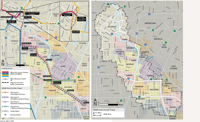

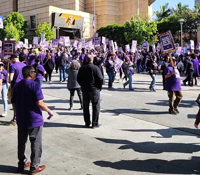

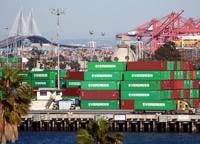

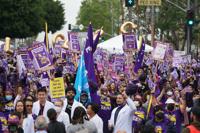

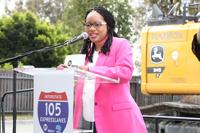
(0) comments
Welcome to the discussion.
Log In
Keep it Clean. Please avoid obscene, vulgar, lewd, racist or sexually-oriented language.
PLEASE TURN OFF YOUR CAPS LOCK.
Don't Threaten. Threats of harming another person will not be tolerated.
Be Truthful. Don't knowingly lie about anyone or anything.
Be Nice. No racism, sexism or any sort of -ism that is degrading to another person.
Be Proactive. Use the 'Report' link on each comment to let us know of abusive posts.
Share with Us. We'd love to hear eyewitness accounts, the history behind an article.